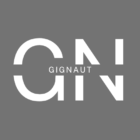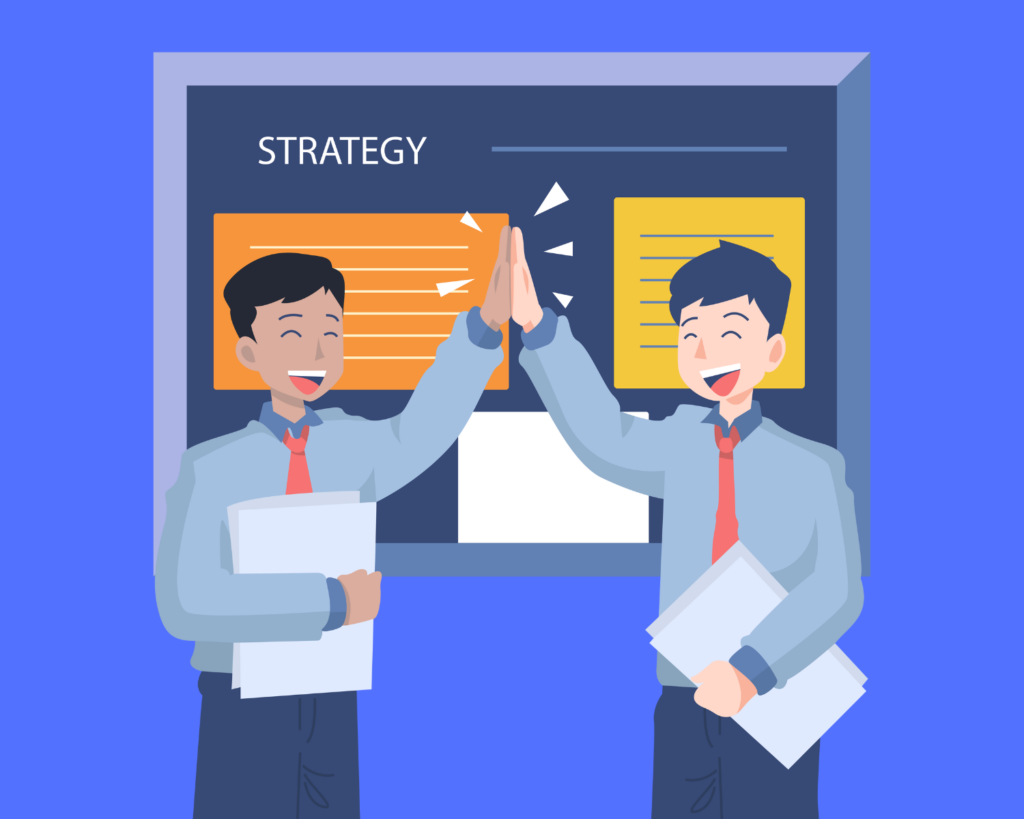What is SaaS Business Strategy?
Software as a Service (SaaS) business strategy is a dynamic approach that leverages cloud-based solutions to deliver software applications to users on a subscription basis. In this model, companies host and maintain the software, making it accessible to customers over the Internet.
Succeeding in the highly competitive world of SaaS demands a well-thought-out approach that encompasses multiple aspects to drive growth, maximize profitability, and ensure exceptional customer satisfaction. Within the pages of this enlightening blog post, we will embark on a journey to uncover the seven fundamental elements that should be incorporated into your SaaS business strategy.
By seamlessly integrating these crucial components into your strategic framework, you will gain the essential tools to navigate the ever-changing landscape of the SaaS industry with confidence and achieve long-lasting success.
Key Elements to Include in Your SaaS Business Strategy
1. Clearly Defined Target Market
In the bustling world of SaaS, one of the key pillars of a successful business strategy is a clearly defined target market. Identifying a specific group of customers who will benefit the most from your SaaS product is vital for several reasons. Let’s explore the significance of defining your target market and the benefits of focusing on a niche audience.
Understanding Customer Needs: By defining your target market, you gain a deep understanding of your customer’s pain points, challenges, and goals. This knowledge allows you to tailor your SaaS product to meet their specific needs effectively.
Instead of offering a generic solution that tries to please everyone, you can develop features and functionalities that address the unique pain points faced by your target market. This customer-centric approach enhances the value and relevance of your SaaS product, making it more compelling to potential customers.
Efficient Marketing and Communication: A clearly defined target market enables you to streamline your marketing efforts. Rather than casting a wide net and hoping to catch some interested customers, you can focus your marketing resources on channels and messages that resonate with your specific audience.
By understanding their demographics, preferences, and behaviors, you can craft targeted marketing campaigns that speak directly to their needs and aspirations. This targeted approach increases the chances of attracting qualified leads and converting them into paying customers.
Enhanced Customer Engagement: When you cater to a specific target market, you have the opportunity to establish deeper connections with your customers. By understanding their industry, pain points, and goals, you can engage in meaningful conversations that resonate with their experiences.
This deeper level of engagement fosters trust and loyalty, as customers feel understood and supported. It also allows you to build a community around your SaaS product, where customers can interact with each other and provide valuable feedback for further product improvements.
Competitive Advantage: Focusing on a niche market gives you a competitive advantage by differentiating your SaaS product from broader, more generic solutions. By targeting a specific audience, you can position your product as the go-to solution tailored to their unique requirements.
This specialization creates a barrier to entry for competitors, as they would need to replicate your level of understanding and customization to effectively compete. By establishing yourself as a leader in your niche market, you can attract customers who specifically seek out specialized solutions and are willing to pay a premium for them.
Opportunity for Growth: While it may seem counterintuitive, focusing on a niche market can provide ample opportunities for growth. By dominating a specific industry or customer segment, you can establish a strong foothold and expand your reach organically.
Satisfied customers within the niche market are more likely to recommend your product to others facing similar challenges, allowing you to leverage word-of-mouth marketing and referrals. As you solidify your position within the niche, you can explore adjacent markets and expand your product offerings to cater to broader audiences while retaining the core strengths that initially propelled your growth.
2. Value Proposition:
A value proposition is a concise statement that communicates the specific benefits and values your SaaS product provides to customers. It answers the fundamental question of why customers should choose your product over others in the market. A well-crafted value proposition articulates how your product solves a problem, fulfills a need, or creates a positive outcome for customers.
In the SaaS industry, where customers have an abundance of choices, a strong value proposition is critical for several reasons:
Differentiation: The SaaS market is crowded, with numerous players offering similar solutions. A compelling value proposition helps you stand out from the competition. It highlights the unique features, functionalities, or benefits that make your product superior and more valuable to customers. By clearly articulating your unique selling points, you create a differentiator that can attract customers who resonate with the specific value your product offers.
Customer Focus: A well-defined value proposition demonstrates your understanding of customer needs and pain points. It shows that you have designed your SaaS product with the customer in mind, addressing their specific challenges and goals. By emphasizing the customer-centric aspects of your solution, you build trust and credibility, positioning yourself as a reliable partner that can effectively address their needs.
Clarity and Simplicity: In a crowded market, customers have limited time and attention. A concise and clear value proposition helps customers quickly grasp the benefits and value your product provides. It enables them to make informed decisions without having to sift through extensive product descriptions or compare multiple options. A compelling value proposition simplifies the decision-making process for potential customers, increasing the likelihood of conversion.
Now, let’s explore some tips for creating a compelling value proposition that differentiates your product:
Understand Your Target Market: To create a value proposition that resonates with customers, it’s crucial to deeply understand your target market. Conduct market research, identify customer pain points, and analyze their goals and aspirations. By gaining insights into their needs and desires, you can tailor your value proposition to address their specific challenges and highlight the outcomes they seek.
Focus on Benefits, not Features: While it’s important to showcase the features and functionalities of your SaaS product, your value proposition should primarily focus on the benefits it delivers. Highlight the positive outcomes, cost savings, or efficiency gains that customers can achieve by using your product. Frame your value proposition in terms of the results customers can expect, rather than merely listing product features.
Be Clear and Concise: Craft your value proposition using clear and straightforward language. Avoid technical jargon or complex terminology that may confuse or alienate potential customers. Use concise statements that capture the essence of your value proposition, making it easy for customers to understand and remember.
Highlight the Unique Selling Points: Identify the unique aspects of your SaaS product that differentiate it from competitors. It could be a specific feature, proprietary technology, superior user experience, or exceptional customer support. Emphasize these unique selling points in your value proposition to create strong differentiation and convince customers that your product offers something they won’t find elsewhere.
Use Data and Social Proof: Support your value proposition with data, statistics, or case studies that demonstrate the impact and success your SaaS product has delivered to previous customers. Incorporate customer testimonials or reviews to provide social proof and build trust among potential customers.
3. Pricing Strategy
Pricing is a critical component of your SaaS business strategy, as it directly impacts revenue generation, customer acquisition, and overall profitability. In the SaaS industry, several pricing models are commonly used, each with its own advantages and considerations. Let’s explore some of these pricing models and provide insights on how to determine the optimal pricing strategy for your SaaS product.
Subscription Pricing: Subscription pricing is a popular model in the SaaS industry, where customers pay a recurring fee to access the product or service. This model offers predictable revenue streams and allows for easier customer retention. It is often structured in tiers based on features, functionality, or usage limits. Subscription pricing provides flexibility for customers to choose a plan that suits their needs and budget, while also offering opportunities for upselling and expansion within the customer base.
Tiered Pricing: Tiered pricing involves offering different pricing plans with varying features and benefits. This model allows you to cater to different customer segments, offering basic features at a lower price point and more advanced features in higher-tier plans. Tiered pricing appeals to a wider customer base, accommodating those with varying needs and budgets. It also encourages customers to upgrade to higher tiers as their requirements grow, increasing revenue potential.
Usage-Based Pricing: Usage-based pricing charges customers based on their actual usage or consumption of the SaaS product. This model is particularly suitable for products with variable usage patterns, such as cloud storage, bandwidth, or API calls. Usage-based pricing provides transparency and fairness, as customers pay only for what they use. It can also incentivize customers to optimize their usage and explore cost-saving measures.
However, it requires robust tracking and monitoring systems to accurately measure usage and bill customers accordingly.
Determining the optimal pricing strategy for your SaaS product requires careful consideration and analysis. Here are some insights to help you in the decision-making process:
Understand Customer Value Perception: Analyze the value your SaaS product delivers to customers. Consider the impact it has on their efficiency, productivity, cost savings, or revenue generation. Understanding the value perception of your target market will guide you in setting a price that aligns with the benefits they receive.
Research Competitor Pricing: Study the pricing strategies of your competitors in the market. Analyze their pricing models, features offered, and the value they provide to customers. This research will help you position your pricing competitively and differentiate your offering.
Consider Cost Structure and Profitability: Evaluate your cost structure, including development, infrastructure, marketing, and support costs. Factor in the desired profit margin and ensure that your pricing strategy covers these expenses while allowing for sustainable growth.
Conduct Market Research and Testing: Gather feedback from your target market through surveys, focus groups, or interviews to gauge their price sensitivity, willingness to pay, and perceived value. Additionally, consider implementing A/B testing or pilot programs to assess different pricing strategies and their impact on customer acquisition and retention.
Iterate and Adapt: Pricing is not a one-time decision. Continuously monitor the market, track customer behavior, and gather feedback to refine and adjust your pricing strategy over time. Be open to experimentation and adapt as the market dynamics and customer needs evolve.
In the competitive landscape of the SaaS industry, customer acquisition and retention are crucial for the success and growth of your business. To attract new customers to your SaaS product and keep them engaged over the long term, you need to implement effective strategies. Here are some key insights on customer acquisition and retention:
4. Customer Acquisition and Customer Retention
In the competitive landscape of the SaaS industry, customer acquisition and retention are crucial for the success and growth of your business. To attract new customers to your SaaS product and keep them engaged over the long term, you need to implement effective strategies. Here are some key insights on customer acquisition and retention:
Customer Acquisition
Targeted Marketing: Identify your ideal customer profile and focus your marketing efforts on reaching and engaging with this specific audience. Utilize targeted digital marketing campaigns, content marketing, social media advertising, and search engine optimization to attract potential customers who are likely to find value in your SaaS product.
Compelling Value Proposition: Clearly communicate the unique benefits and value your SaaS product offers. Highlight how it solves customer pain points and improves their operations, productivity, or efficiency. Craft a compelling value proposition that differentiates your product from competitors and resonates with your target market.
Free Trials and Demos: Offer free trials or demos to allow potential customers to experience the value of your SaaS product firsthand. This enables them to understand its features, functionality, and usability before making a commitment. Provide a seamless onboarding experience during the trial period to encourage conversion to paid customers.
Customer Retention
Excellent Customer Support: Provide exceptional customer support to ensure customers feel valued and supported throughout their journey. Promptly address their queries, concerns, and issues, and offer proactive guidance and assistance. Building strong relationships and delivering a positive customer experience fosters loyalty and reduces churn.
Continuous Improvement: Regularly update and enhance your SaaS product based on customer feedback and market trends. Show customers that you are actively working to improve the product and meet their evolving needs. Regular feature releases, bug fixes, and performance optimizations demonstrate your commitment to providing a top-notch solution.
Personalization and Upselling: Tailor your communication and offerings to each customer’s unique needs and usage patterns. Leverage customer data and analytics to provide personalized recommendations, upselling opportunities, and relevant content. Demonstrating that you understand their specific requirements increases customer satisfaction and encourages long-term loyalty.
Customer Engagement and Education: Foster a sense of community and engagement among your customers. Provide educational resources, webinars, and workshops to help them maximize the value of your SaaS product. Encourage active participation and feedback through user forums or feedback channels. Engaged customers are more likely to remain loyal and advocate for your product.
5. Building a Scalable Infrastructure for Growth
In the fast-paced and rapidly evolving world of technology, building a scalable infrastructure is essential for SaaS businesses aiming for sustainable growth. A scalable infrastructure refers to an IT framework that can efficiently and seamlessly accommodate increasing workloads, user demands, and data volume as a business expands. Here are some key reasons why building a scalable infrastructure is crucial for supporting growth:
Meeting Increased Demands: As a business grows, the demand for its products or services typically increases. This surge in demand may lead to higher website traffic, larger customer databases, and greater computing power requirements. By building a scalable infrastructure, businesses can ensure their systems have the capacity and flexibility to handle the growing demands without experiencing downtime or performance issues.
Cost Efficiency: Scalability allows businesses to optimize their resource allocation and avoid unnecessary expenses. Instead of investing in excessive infrastructure upfront, which may not be fully utilized initially, scalability enables gradual expansion based on actual needs. This cost-efficient approach helps businesses manage their budget effectively while minimizing the risk of over-investment or underutilization of resources.
Enhanced Performance and Reliability: A scalable infrastructure ensures that systems can maintain optimal performance even under heavy workloads. It minimizes the risk of system crashes, slow response times, or service interruptions, which can significantly impact customer satisfaction and business reputation. By providing a stable and reliable user experience, businesses can foster customer loyalty and attract new customers.
Flexibility and Adaptability: In today’s dynamic business environment, flexibility is paramount. A scalable infrastructure allows businesses to adapt to changing market conditions, customer preferences, and emerging technologies. It enables quick adjustments to accommodate new features, services, or expansions into different geographical regions. This agility is crucial for businesses to stay competitive and seize opportunities for growth.
Streamlined Operations: Scalable infrastructure promotes streamlined operations and efficient resource allocation. Automated scaling mechanisms and cloud-based solutions enable businesses to dynamically allocate resources based on demand fluctuations. This flexibility eliminates manual intervention, reduces administrative overheads, and allows IT teams to focus on strategic initiatives rather than managing infrastructure limitations.
Facilitating Innovation: By eliminating the constraints of infrastructure limitations, scalability fosters a culture of innovation. Businesses can experiment with new ideas, test prototypes, and introduce innovative features without being hindered by the fear of outgrowing their infrastructure. This promotes a continuous cycle of improvement and drives long-term growth.
6. Continuous improvement and adaptation
Continuous improvement and adaptation are paramount in the fast-paced SaaS industry. Technology advancements, changing customer expectations, and evolving market dynamics require SaaS businesses to stay agile and responsive. By embracing a culture of continuous improvement, companies can refine their products, enhance user experience, and address emerging challenges.
Adapting to new technologies, industry trends, and customer feedback enables SaaS businesses to remain competitive, attract and retain customers, and seize opportunities for growth. In this ever-evolving landscape, those who prioritize continuous improvement and adaptation position themselves for long-term success in the dynamic SaaS industry.
Uzma is a Professional Content Writer and Certified Digital Marketing Expert




